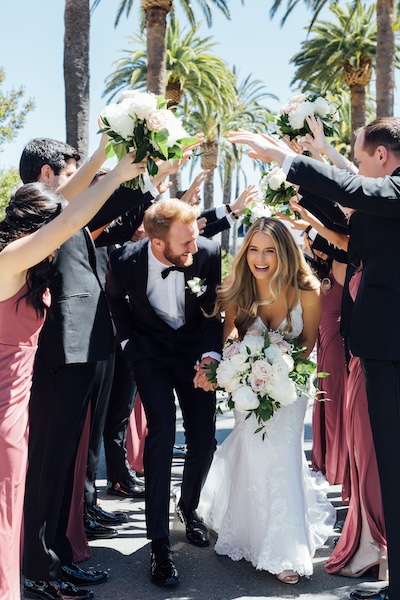Business + Marketing
It has been two months since I deleted my social media accounts. By “delete,” I don’t mean that I simply removed the apps from my phone. I mean that I closed the accounts, resulting in the loss of nearly 60,000 followers.
In a post on my website explaining this decision, I list a number of reasons for leaving social media, such as follower engagement overly influencing the ways in which I create; an increase in anxiety, brought on my social media; and the investment of hundreds of hours per year with little quantifiable payoff.
I’ve had a lot of extra time on my hands over the months since. Some days, I find myself missing the easy affirmations and dopamine hits. Social media was like a security blanket in a way—something I could go to when I was feeling down or work was slow. Largely, however, I have learned that my mind has been thriving with the increase of down time. I have the space needed not only for inspiration, but more importantly, I am afforded the gift of perspective. Now that I am not constantly comparing myself and the growth of my business against everyone else in the world, I find myself encouraged by how far my business has grown in such a short amount of time.
A question I am often asked is whether being off social media has negatively impacted my business. Although it may be a bit too early to be certain, I have found that I am actually more productive and have had more work since leaving the platforms behind. Let me explain.
Now that I have an extra two hours a day (time formerly spent preparing a post, posting, and replying to comments and messages), I reallocated those hours to the following:
- Going through old emails and compiling a list of my repeat clients.
- Reaching out to said clients by email, phone call, or text (depending on the type of relationship I have with them).
- Asking if they have any upcoming projects, explaining how I always enjoy working with them. If they are local, ask if they want to grab lunch or coffee to catch up.
Last month, I had four shoots that resulted from this exercise—four shoots that may not have happened had I still been on social media.
For years, I put emphasis on social media, which felt to me as if I was fulfilling the marketing needs of my business. Though my work was no doubt being seen by some of the photo editors, creative directors or former clients that followed me, many of them would never see my posts because they were also following hundreds or thousands of other accounts.
Now that I am directly approaching my network of clients, I am certain they will see my work and we are afforded a more adequate space for conversation and relationship building. I equate this to being the host of a party and walking up to a particular guest and offering them a plate of food, as opposed to hoping that they got something to eat from the caterer circulating the room with a tray of hors d’oeuvres. My presence is much harder to miss when I am right in front of them, and I can be certain that they at least had an opportunity to partake.
Let’s shift directions and talk numbers for a minute. I had just under 23,000 followers when I deleted my Instagram account. Of those followers, around 2,000 to 4,000 people saw any given post that I made. Of those people, around 1,000 would interact with the post, by liking or commenting. Of those 1,000 people, how many were potential clients with a realistic budget? I can’t say definitively, but based on my annual billings, it was a low number—the vast majority of my income comes from people I know and repeat clients.
Let’s say that handful of new clients discovered me on social media and the conversation made it all the way through them hiring me for a gig. It’s hard to quantify exactly how much work came in as a result of a social media post, but for the sake of easy math, let’s call it $10,000 (it’s likely much lower). Now let’s calculate how many hours I invested to get that $10,000. I spent an average of 15 hours a week on social media, or 780 hours a year. That comes out to around $12/hr. At that rate, I’d be better off getting a part-time job at Starbucks, which at least comes with healthcare.
Many small businesses are only on social media to reach new clients. But I found that a great deal of my engagement was coming from other photographers or photo enthusiasts, as opposed to potential clients. Using social media for marketing felt a lot to me like I was pitching my product to other salesmen at a sales conference. If we are just buying and selling to each other, it’s a net zero game. The only person who wins is the owner of the conference center (or social media platform). I am reminded of a scene in the movie Rounders. A handful of poker players who regularly play together run into each other at a casino and decide to sit at the same table. After a few minutes, one of the friends says, “You know, if we wanted to take each other’s rolls, we could have just stayed home.”
The other reason I cited for leaving social media was how user engagement was beginning to influence the way in which I photographed. If I were to try a new experimental technique and my post were to receive only a quarter of the engagement, on some level I would see the experiment as a failure. Though superior minds may be able to overlook this influence, the numbers were hard to argue with. I found myself going for the easy win, which in my case meant posting images containing lots of reds and oranges and movement.

In the time since I’ve been off social media, I’ve taken my images in a dramatically different direction. I have begun to experiment with shooting through different textures and substances, creating hazy and even painterly photos.





Though I have no idea how they’d be received on social media, I know that I and my subject enjoy them, and that’s good enough for me.
This journey has a part two: rejoining Instagram after a year, with a whole new, socially healthier outlook and a photo business that had its most profitable year yet.
Nick Fancher is a portrait, commercial and fine-art photographer based in Columbus, Ohio. Keep up to date with his work at nickfancher.com/blog/.
RELATED
3 Ways for Creative People to Kick Emotional Burnout From Their Minds
Building a Genuine Social Media Following From the Heart
Have You Had It With the Social Media Algorithms?
6 Ways Photographers Can Proactively Avoid Isolation





